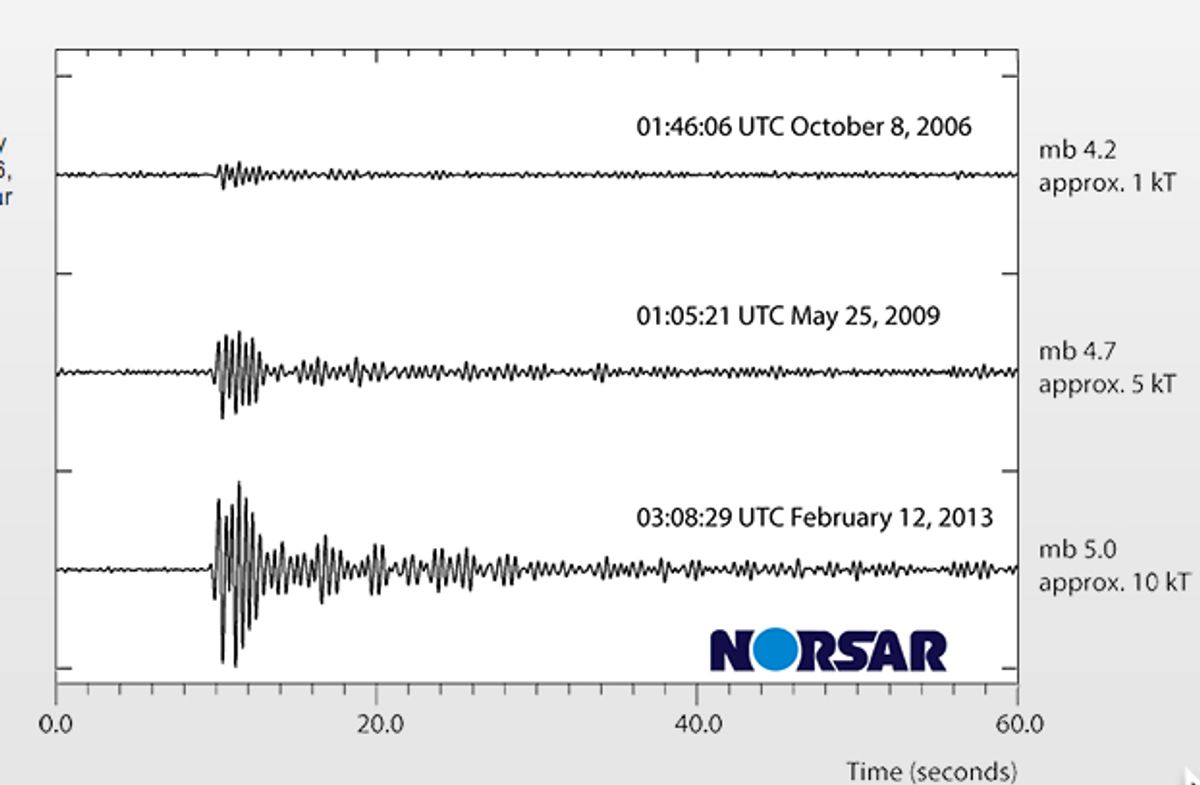The North Korean provenance of yesterday's nuclear explosion leaps out at even the most casual visitor to the Web site of NORSAR, the Norwegian Seismic Array, north of Oslo.
“Look at the three lines showing the test blasts of 2006, 2009 and 2013,” says Steven J. Gibbons, senior research geophysicist at the organization. “The ripples on the seismograms look identical, except for the difference in amplitude. That’s because the seismic waves have travelled through exactly the same rock, the same rock boundaries.”
It's a correlative method, like fingerprinting, but it works only if you have an earlier, positively identified blast from the same site to serve as a template, notes Gibbons, an IEEE member. “People are trying to develop models that might one day be able to detect such an explosion without a prior example, but I personally think that’s a long way off,” he says.
After noting a nuke's characteristic squiggle in a seismic readout, researchers around the world can compare notes to pinpoint the origin. “By measuring miniscule differences in travel times between the different stations, you can say that the test in 2009 was approximately 2 kilometers west of the one in 2006 and that the one today was less than one kilometer away.”
Detector arrays in quiet areas, like the central Sahara or the Australian outback, are particularly useful for separating a nuclear explosion’s fingerprint from background noise coming from road traffic, ocean waves, and numberless movements in the depths of the earth. Once the identification is certain, the amplitude of various data samples over time can help you estimate the size of an explosion.
“If you increase the yield by a factor of 10, you increase the amplitude on the seismograph by a factor of log 10,” Gibbons explains. “We think North Korea’s yields have increased tenfold--from 1 kiloton in 2006 to 5 kilotons in 2009 and to 10, in 2013.”
For all the advantages of a far-flung network of detectors, there is still good reason to get as close to the action as possible. “A seismic wave will decay with distance,” Gibbons explains. “I follow very closely what happens in North Korea, and we process data from Russia’s detector, which is about 350 km from the North Korean border, and from South Korea’s, which is about 250 kilometers from it. We can thus detect mining blasts in North Korea, and I can say, yes, that is what it is, and it came from here or from there.”
Philip E. Ross is a senior editor at IEEE Spectrum. His interests include transportation, energy storage, AI, and the economic aspects of technology. He has a master's degree in international affairs from Columbia University and another, in journalism, from the University of Michigan.



